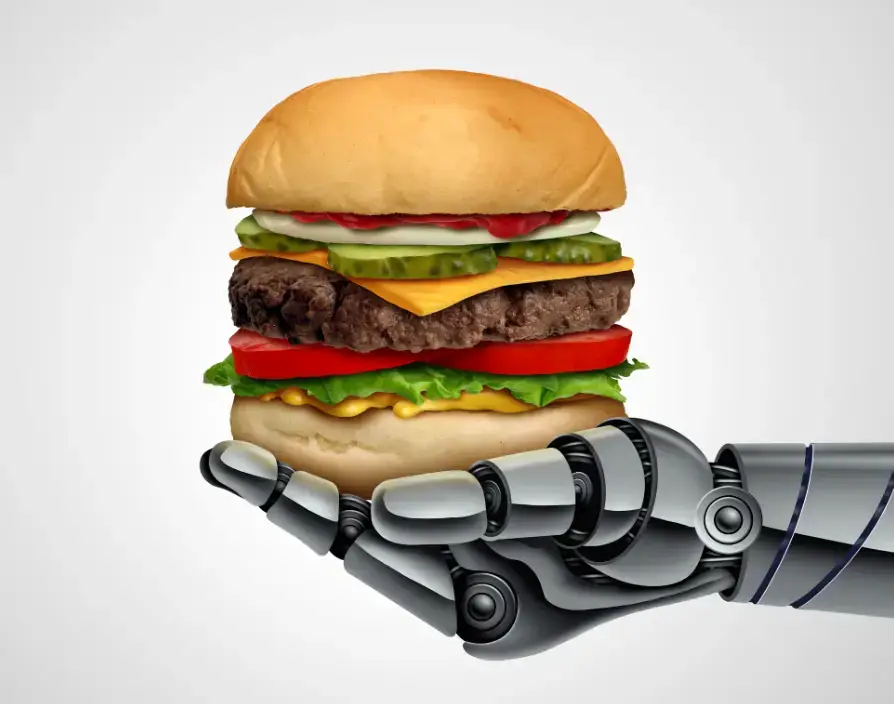Yet today it’s a reality in the fast-food industry, with several US companies leading the charge towards full automation. Antonio Honda explains how
With science fiction now becoming science fact the fast-food industry is seemingly embarking on a major journey ending with automation.
Case in point is Miso Robotics, a California-based startup, which has developed Flippy, an AI-powered robot designed to handle the hot and greasy task of flipping burgers. Meanwhile, White Castle, an iconic American fast-food chain, has partnered with Miso Robotics to bring Flippy into their kitchens. The results have been impressive.
Given Flippy can operate 24/7 without breaks, it is significantly boosting kitchen productivity. Moreover, the robot ticks the consistency box by ensuring each burger is cooked to perfection, thereby maintaining high quality standards.
Unsurprisingly, automating the cooking process also reduces labor costs, allowing for better allocation of resources.
Drilling down into the numbers White Castle reported a 25% increase in kitchen output while labor costs were reduced by 10%. And all of this in parallel with consistency in food quality leading to increased customer satisfaction.
Also leading the way is CaliBurger – a fast-food chain known for its West Coast-style burgers. It too has embraced full automation with the help of Miso Robotics’ Flippy. Indeed, the introduction of Flippy at CaliBurger locations has transformed their kitchen operations – not least because CaliBurger uses Flippy not only for flipping burgers but also for preparing fries and other tasks, making their kitchens highly automated.
The big takeaway is that the success of Flippy at CaliBurger has paved the way for broader implementation across their locations, as well as allowing staff to focus more on customer service, enhancing the overall dining experience.
From a performance metrics standpoint there was a 30% increase in kitchen throughput, a significant reduction in labor costs and, like White Castle, better reviews and customer satisfaction, due to improved consistency in food preparation.
Meanwhile, Picnic, another player in the food automation space, has developed a modular robotic system specifically designed for pizza assembly. The Picnic Pizza System automates the process of topping pizzas, ensuring consistency and speed.
Not only can its system handle various pizza sizes and topping combinations it is also capable of assembling up to 300 pizzas per hour – significantly reducing preparation time, as well as cutting labor costs (by 50% in this case).
Noteworthy is that several food service operators and stadiums in the US have already adopted Picnic’s technology, showcasing its versatility.
The adoption of robotics in fast food franchises isn’t simply a novelty though; indeed it represents a significant shift in how these businesses operate. Here are some key benefits and potential challenges:
Benefits
- Increased Efficiency: Robots can work continuously without breaks, significantly boosting output
- Consistency and Quality: Automation ensures that each product meets the same high standards, enhancing customer satisfaction
- Cost Savings: Reducing reliance on human labor can lead to substantial cost savings in the long term
Challenges:
- Initial Investment: High upfront costs for purchasing and installing robotic systems
- Maintenance: Ongoing maintenance and technical support are crucial to ensure smooth operations
- Public Perception: Some customers may be wary of fully automated food preparation, requiring effective communication and marketing strategies
The integration of robotics into fast food franchises like White Castle, CaliBurger, and innovative companies like Picnic, is paving the way for a new era of food service. While there are challenges to overcome, the benefits of increased efficiency, consistency, and cost savings are undeniable. As technology continues to advance, we can expect to see even more automation in the fast-food industry, transforming how we think about quick service restaurants.
In the words of Henry Ford, “If everyone is moving forward together, then success takes care of itself.” By embracing automation, fast food franchises are moving forward into a future of enhanced productivity and customer satisfaction.
For a visual overview, check out this NBC video covering CaliBurger’s use of Flippy.








